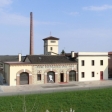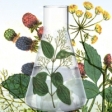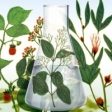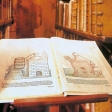Alcohol (chemistry)
The ethylic alcohol (C2 H5 OH) is a carbonium hydrate where an hydrogen atom (H) has been replaced by an hydroxyl (OH). It comes from ethane (C2H6), an hydrocarbon by open chain in which an hydroxyl (OH) replaced an hydrogen atom (H). When it is pure, that is 100% Alc./Vol., the ethylic alcohol is a liquid getting inflamed at a temperature of less than 12% Alc./Vol. with a specific weight of Kg 0,7946 per liter, so it is lighter than water. The quantity of the ethylic alcohol included in a hydroalcolic mixture is estimated by means of a tool called alcoholmeter centesimal. It deals with a graduated densimeter used to show the quantity of pure alcohol concerning the volume, contained in 100 parts of the mixture submitted. By considering that the liquid volume increases according to the rising of the temperature and vice versa, the granulation of the alcoholmeter is calculated on the basis of the temperature, as fixed; for those Countries belonging to the European Economic Community a temperature of 20 °C degrees has been fixed by replacing 15,56 °C degrees from Tralles to Menadelejev and 15 °C degrees from Guy-Lussac and Brix, as previously adopted. The use of these alcoholmeters is necessarily linked to the contemporary use of equal thermometers which nowadays, in most Countries, corresponds to the centigrade of Celsius. The ethylic alcohol boils at 78,3 C° degrees, at an ordinary atmospheric pressure (760 mm mercury), that is at the same pressure through which distilled mercurial water boils (at 100 °C) and solidifies less than 114 °C: then there is alcohol ice. At a low temperature, less than 135 °C, the ethylic alcohol gives rise to a phase called "dimorphism", by turning into a second vitreous solid mass. As we told before, the ethylic alcohol extremely inflammable and when burning it gives a bluish flame that does not produce smoke. Those who ask for further data can add some information: the molecular weight of the ethylic alcohol corresponds to 46,05%; its a teorical centesimal setting: C=52,12%, 0=34,75%, H=13,13%; its high heat power = 7184 Cal/Kg., its low heating power = 6480 Cal/Kg., its steam heat= 213,5 Cal/Kg. The complete burning of 1 Kg of pure alcohol needs at least 9,09 air Kg, in its natural components (a fifth oxygen). The refraction index of pure ethylic alcohol, with a temperature of 17,5 C° degrees corresponds to 1,3619, equal to 92,3 refract metrical degrees, and dipping refractometer Pulfrich-Zeiss. The ethylic alcohol is subject to the phenomenon "contraction" that means through water mixture it gives a lower volume compared to the sum of the two components (water + alcohol). In order to get 100 litters of a 50 °C Tralles hydroalcoholic mixture at a temperature of 15,56 °C degrees, 54 litters of pure alcohol and 49,722 litters of distilled water are necessary. Such a difference in volume depends on the mixture of substances (water and pure alcoholic) which have got a different molecular volume: it is bigger than the alcohol volume and smaller than water. In this way the water molecular finds the alcohol ones by using the whole intermolecular space available, giving place to a light steam which contributes to make less mixed liquids with only two mixed ones.













